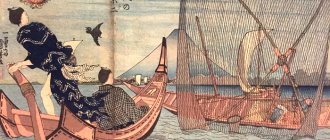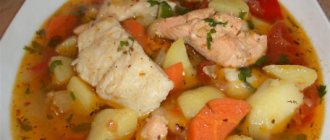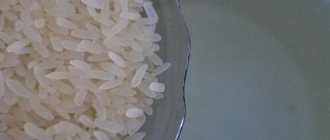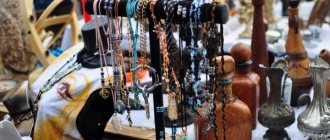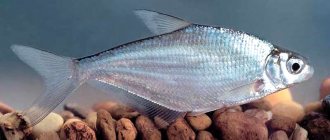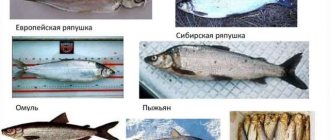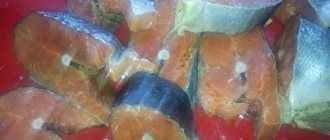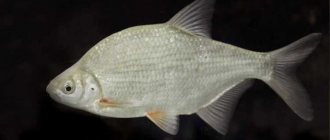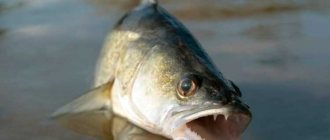Having spent just over two weeks in Japan, I can safely say that food is no less important to the Japanese than culture or history. This is something they are very proud of, because the cult of food here is highly developed and you can eat delicious food literally at every turn. Historically, the Japanese consume much more seafood in their diet than, for example, Europeans. Therefore, the best, most delicious and fresh seafood can be found in Japan. And it is not at all surprising that Tokyo is home to one of the largest fish markets in the world - Tsukiji. He is known far beyond the borders of his country, and the range of his products is legendary. And since we really love fish and seafood, Tsukiji was the first place we visited in Tokyo. We were very lucky that the hotel was relatively close and we could walk to the market.
- Market history
- How to get to Tsukiji Market
- Tsukiji Market opening hours
- What to see and try at Tsukiji Market
The main mecca of fish and seafood in Japan
Market history
There are references to a market in Tokyo where Japanese fishermen sold their surplus catch as early as the 17th century. They came to the understanding that the market needed to be built only in 1923. And 6 months after construction it was completely destroyed due to a strong earthquake. It received its modern appearance already in 1935, and the Tsukiji district was chosen as the location. There were rumors that the market was going to be moved to another area in 2015, but as of August 2021, it is still located where it has been for over 80 years. More than 2,000 tons of fish and seafood pass through this market every day. And here you can be 100% sure that the fish you are served is the freshest, because the huge flow of tourists does not allow goods to linger on the shelves.
Tsukiji Market's stalls are stocked with the freshest seafood
How to get to Tsukiji Market
The easiest and cheapest way is to take the Oedo Crimson Line subway to Tsukijishijo Station. Please note that this is the station you need, and not Tsukiji, which seems to be more in tune with the name of the market. The station is located 100 meters from the main entrance to the market. If you take the subway, it will likely cost you up to 560 yen, depending on how far away the station you board at is. If you choose a taxi, just boarding will cost 500 yen and you will pay 450 yen for each additional kilometer.
The tuna head can be safely called the symbol of the Tsukiji market
Tsukiji Market opening hours
The market is famous for its nightly tuna trading, which starts at 03:00 am. Therefore, if you want to get there, you will not only have to get up early, and maybe even stay up, but also join a live queue of people who want to watch this action. No more than 120 tourists are admitted to the auction every day. This is done so that with their cameras and questions they do not distract sellers and buyers from the main task - bidding. After all, restaurant owners and wholesale buyers from all over the country come here to buy the freshest and most delicious tuna.
If you are not ready to stand up to look at the dead carcasses of healthy fish, then come to the market by 08:00 - 09:00. By this time, life is already in full swing here, and a large number of different seafood and fish are sold, all the cafes and restaurants are open, so come here very hungry, because the best sushi and sashimi in Japan are served here. Fresher fish than here can only be found in the sea.
We didn’t get to the tuna auction, but judging by the photographs, it looks exactly like this
As a rule, the market is fully operational until lunchtime, maximum until 15:00. However, the rule applies here: the earlier you came, the more interesting things you saw and tasty things you ate. We went to Tsukiji Market for breakfast throughout our stay in Tokyo.
Prices at restaurants at Tsukiji Fish Market
It is possible that it is a little cheaper than in Moscow, but if we compare, for example, with the Japanese restaurants Riosha in Bali, then in Japan the prices for sashimi and sushi are higher than in Bali. It’s nice to drink hot sake in the morning - a very good aperitif, I can recommend it. Before this, of course, there is green tea, and then hot wine (sake), which pleasantly warms you up (in the morning, as I said, it was quite cool and gray).
Then I decided to eat folk food in the row where soups are prepared and market workers eat. So: in two places they refused to serve me - pour soup. Moreover, I pointed with signs (English was not understood and was ignored) to the plate of those who were eating and said “sorry” in Japanese.
They simply waved their hands at me like I was an annoying fly. This, of course, was very upsetting, because before that I was in a great mood after a hearty set of sashimi and sushi and half a liter of hot sake.
And yet I tried the soup. A little different than what they ate at the place where they turned me down, but still - at a popular eatery, where those who work in the market eat. It costs something like 200 yen. Instant noodles, basically, a couple of pieces of pork, a brown egg and greens - very good with Asahi beer. He consumed all this while standing, at a metal table, looking at the passing people.
What to see and try at Tsukiji Market
Let me make a reservation right away - if you don’t like seafood and fresh fish, then you may not particularly like it here. However, lovers of sea reptiles will fully appreciate the entire range and variety of products here.
We have never seen such large oysters anywhere
Octopuses curl up and freeze very nicely
The first thing we saw in the shopping arcades were those same huge trays with fish and other seafood. The diversity made my eyes run in different directions. Most products are sold chilled, and only a small part is frozen. Crabs and shrimp are sold while still alive, and they can be caught right before your eyes in large aquariums. We could not identify some of the sea creatures because we had never seen them before. Even if it is whale meat, which is prohibited from being caught in many countries. You can also see ready-made sushi on trays here, but I wouldn’t recommend buying them, because everything is much better and tastier in the second part of the market. We counted three such stalls with fresh products at the market, but there may be more.
They may catch an aquarium inhabitant in your presence and take it with them.
Various whale meats
Shrimp for every taste and size
Imbued with the sight of the freshest sea creatures, we certainly immediately wanted to try it all, and, diving into the rows adjacent to the shopping pavilions, we were very happy, because here ready-to-eat delicacies were sold at every turn.
It’s not worth writing about the huge selection of fish
Some fish are already sold cut
Take it and eat it
Another strange inhabitant of the deep sea
You won't find fish like this in our supermarkets.
Very strange cutting of a fish head
Before we had time to have breakfast, we went into a cafe, where all the seats were occupied by the Japanese, and ordered food there, which seemed to us the most delicious. Since there may not be a menu in English, feel free to rely on the photographs of the dish; as a rule, they convey 90% of the exact serving sizes and its ingredients. Even the best sushi that we ordered in Kyiv restaurants could not compare with the simple food of an ordinary Japanese eatery at the Tsukiji market.
To attract visitors, restaurants on the market are decorated in the most unexpected way.
Breakfast at Tsukiji Market
Even after you have eaten deliciously, do not rush to leave here, because they sell such unusual goods that you will not find in other places. We really liked the idea of an omelet on a stick, but there was such a long queue of tourists that you could die of hunger while waiting in the wings. Besides, even though it’s on a stick, it’s still an ordinary omelette, which we can easily eat for breakfast every day. Our attention was drawn to skewers of octopus, scallops, eel and other seafood delicacies. But you won’t be able to get enough of them, even if you eat 3-4 pieces.
Unrealistically delicious kebabs
We also liked kebabs made from berries, in particular grapes, which the scrupulous Japanese grow from a special variety, and each grape on the branch must correspond not only to a certain size, but also contain the right amount of fructose. A kebab of 4 grapes is dipped in liquid nitrogen for a few seconds and then comes out almost frozen. Somehow we weren’t particularly impressed with this freezing, but the grapes themselves were incredibly tasty. It’s not for nothing that it sells for $50 for one medium-sized sprig.
You don't even need bottles
I was very surprised to see a small cafe that served sea urchins. I always knew that hedgehogs are very dangerous creatures, especially if you step on them, but only in Japan did I see that they can also be cooked, and they are considered a real delicacy, like caviar.
The sight of cooked sea urchins may even curb your appetite
In addition to food, the market sells many spices, seasonings, vegetables, fruits, even cutting knives, which are famous for their perfect sharpening. It is so sharp that it can easily cut through the meat and bones of fish of any size. However, they can only be taken out in luggage, and under no circumstances in hand luggage.
The fruits on the market are no less delicious. Pitahaya
We were very lucky at the entrance to one of the restaurants to see the process of cutting huge bluefin tuna caught in the waters of Nagasaki into the freshest sashimi. Japanese masters cut it with us using long and very sharp knives, and the most delicious pieces of meat, which are on the head of the tuna, were immediately served as sashimi to restaurant visitors. This show was the best way to attract as many customers as possible to the restaurant and clearly show how fresh their fish is.
Huge tuna carcasses bought at the morning auction
Tuna carcasses can weigh tens of kilograms
If we sum up our impressions of this market, it is definitely one of the three most memorable objects in Japan. And it absolutely deservedly occupies one of the first places in the ratings of “must-visit” places in Tokyo. If you are planning to come to the Japanese capital, then do not delay your visit to the Tsukiji market, because you will remember it for the rest of your life as a mecca for the freshest tuna.
Fresh, dried, dried, smoked - here you can find fish for every taste
And our journey through Japan is just beginning. Keep an eye on him!
Don't miss out on all the latest
Ginza, Tsukiji
Ginza - a fashionable district of Tokyo with countless boutiques, upscale department stores, restaurants and cafes. Leading design firms consider it an honor to locate their stores here, creating the highest concentration of Western fashion in the capital. Chanel, Dior, Gucci, Louis Vuitton..., it is much easier to list what is not here, although this also poses a certain difficulty. The highest cost of real estate in Tokyo, and perhaps in the world, not only does not stop, but perhaps even encourages the desire of trading houses to have their own sign here: representation in Ginza means belonging to a kind of elite club of the elite.When Tokugawa Ieyasu began building the city of Edo in 1590, the site of fashionable modern Ginza was nothing but a swamp, flooded by ocean waves. In 1612, a mint was opened here, minting silver coins, which in Japanese were called “ginza”. It is because of this that the area later received the name "Ginza", literally meaning "Silver Workshop".
At that time, the monetary system was incredibly complex and confusing. There were three types of coins in circulation: gold, silver and copper. In the second half of the Edo period, due to a shortage of copper, iron coins were also introduced into circulation. There was a certain exchange rate between them, but in addition, different goods had to be bought for different money. Thus, the cost of miso bean paste and soy sauce was calculated in gold “ryo”, goods imported from the Kansai region were to be paid for in silver, and the cost of tofu, soba and other everyday goods was marked in the copper equivalent of “zeni”.
And today the Ginza district is still the most important shopping area in Tokyo.
Most shops in Ginza Tokyo are open every day. The most favorable days to visit are on weekends, when the central street Chuo Dori is closed to traffic and becomes a large pedestrian area. It is closed from 14:00 to 17:00 on Saturdays and from 12:00 to 17:00 on Sundays (until 18:00 from April to September.
The price range on Ginza is huge. You can drink coffee for $5, or you can eat sushi for three hundred. By the way, you can find out the whole truth about rolls, as well as learn how to prepare them correctly, at the sushi academy. Chefs from all over the world come to study at the academy. But there are courses for non-professionals too. Tourists can take a two-day sushi making master class. In regular eateries in different areas of Tokyo, a large portion of sushi costs about 20-30 dollars. Almost everywhere the food will be of high quality.
Attractions Ginza
Ginza Wako Shopping: 10:30 to 19:00 Built in 1932, the Ginza Wako clock tower is the symbol of Ginza, standing on the Northwest corner in the center of Ginza 4-Chome, at the intersection of Chuo and Harumi Dori. Jewelry and luxury goods are sold inside the building. Sony Building Showroom and Stores: 11:00 to 19:00 Restaurants: Generally 11:00 to 21:00 The latest products from Sony, including DVD recorders, TVs, cameras, audio kits, mobile phones and computers and Play Station products are presented to the public in showrooms. There are also several shops, restaurants and cafes. Kabukiza Theater Regular tickets for all performances typically cost between 4,000 and 22,000 yen, depending on seating, and require advance reservations. Tickets for individual acts are sold per day at the theater for about 2,000 yen. Kabukiza is one of the best places to see Kabuki, a traditional Japanese theater performed almost every day. The building was renovated and reopened in April 2013. It closely resembles its predecessor, except for the skyscraper that currently stands above it. Yurakucho Gado-shita Dining (Yurakucho Gato) One of the most interesting areas of Tokyo, in the Yurakucho Station area (from Japanese Gado-shita “under the beam”). Stretching over 700 meters, it includes dozens of restaurants built into brick vaults below the Yamanote Line, from small yakitori (yakitori eateries) and izakaya (restaurants and brasseries) to slightly more upscale French wine bars.
Police Museum Opening hours from 10:00 to 18:00 Non-working days: Mondays (or the next day if it falls on a National Holiday), from December 28 to January 4. Admission: Free English: not spoken (there is a free informative booklet in English) The building is located north of the Ginza shopping district, the Tokyo Police Department is located on four floors of the Police Museum, admission is free. Although there are no English labels or displays, the historical uniforms and equipment can still be easily understood.
Shopping centers Ginza
Mitsukoshi Shopping: 10:30 to 20:00 Restaurants: Generally 11:00 to 23:00 Mitsukoshi Shopping Center opened in 1930 and offers goods and services on twelve floors. Mitsukoshi's history goes back to 1673. Matsuya Stores: 10:00 to 20:00 Restaurants: Generally 11:00 to 22:00 Matsuya Shopping Center is part of a chain of department stores and offers high fashion, food, household goods, a pet store, travel agency and showroom , all on eleven floors. Printemps From 11:00 to 21:00 (until 20:00 on Sundays) A shopping center from the Printemps chain of Paris, it offers fashion, accessories, wines, food and restaurants, housed on ten floors of a building opened in 1984.
Marronnier Gate Daily from 11:00 to 21:00 (restaurants open until 23:00) Marronnier Gate Shopping Center opened in 2007 near Yurakucho Station. The 12 floors house clothing stores from the ground floor to the fourth floor, while the top three floors are occupied by restaurants. From the fifth floor to the ninth floor, the building is occupied by the popular Tokyu Hands branch.
How to get there: The most convenient stations to access are Ginza Station on the Hibiya, Marunouchi and Ginza Subway Lines, as well as Yurakucho Station on the JR Yamanote Line, JR Keihin-Tohoku Line and Yurakucho Subway Line.
Tsukiji Fish Market (築地市場, Tsukiji Fish Market)
For the most delicious and fresh sushi, tourists head to another area of Tokyo - the Tsukiji fish market.
Tsukiji Fish Market is a large wholesale market for fish, fruits and vegetables in Central Tokyo. It is the most famous among more than ten wholesale markets that sell fish, meat, vegetables and fruits, as well as flowers in Tokyo. Tsukiji Market is known throughout the world as one of the world's largest fish markets, with more than 2,000 tons of seafood passing through every day. The market is expected to move to a new site in Toyosu in the spring of 2021.
The concentration of many types of fresh fish and other seafood and the lively atmosphere of passing wheelbarrows, scooters, trucks, and an army of sellers and buyers have made Tsukiji Market a major tourist attraction. In fact, the number of visitors has increased so much in recent years that they are becoming a problem for the business process, since the old infrastructure of the market was not intended to be a tourist destination.
Tsukiji Market is located about a 15-minute walk from Ginza , in central Tokyo. Every day, 450 species of fish and shellfish with a total weight of 2,300 tons arrive here from the seas of Japan, and in fact from the seas of the whole world. The market is noisy, with trucks and three-wheeled vehicles called “turrets” scurrying around delivering fish, and the shouts of auctioneers can be heard. Tsukiji Market is a Japanese treasure trove of seafood. But be careful - it's so crowded here and everyone is so busy with their own business that you can easily hurt yourself if you lose your composure. Every night, from about 11 o'clock, the fish are unloaded: batch after batch. Almost all of it is brought in by truck, although there are also ships that unload at the piers behind the market. After unloading, everything goes to the disposal of seven wholesale companies that have occupied the market areas. They have already reached an agreement to sell fish caught by fishing companies. The strict rule “Sokujitsu jojo, zenryo hambai” applies here, i.e. all catch unloaded today must be auctioned today. This is a guarantee that fishermen will receive real money. Tokyo's fish market consists of the inner market, where most of the wholesale trading and famous tuna auctions take place, and the outer market, whose retail shops and restaurants attract much of the public, although a few restaurants can be found in the inner market. To avoid interference in business, rules have been created that must be strictly followed in various areas of the market.
Tsukiji Market Map
Tuna auction
You can get to the largest fish market in the world either as part of a tourist group or on your own. To do this you will have to get up at five in the morning. At this time, the tuna auction begins here. The spectacle is interesting, but not safe. Sellers are so annoyed by uninvited guests that they always try to run over you with a cart or hit you with a three-hundred-kilogram fish carcass. The market administration even once tried to close tourist visits at this time. The ban was lifted quite recently. But you could always go to the surrounding sushi bars in this area of Tokyo without any restrictions.
The number of visitors at the tuna auction is limited to 120 people per day , this is the maximum number that the market infrastructure can accommodate. Tourists who wish to observe the auction procedure should go to the Fish Information Center (Osakana Fukyu Center) at Kachidoki Gate starting at 5:00 a.m. on a first come, first come basis. The first group of 60 visitors will be admitted to the auction between 05:25 and 05:50, while the second group of 60 visitors will be able to enter between 05:50 and 06:15.
Tsukiji Fish Market has imposed restrictions on attendance at its morning tuna auction. Visiting rules are described on the official website of the market. The rules are written in English, Russian, Chinese and Korean.
Basic rules for visiting: - only 120 tourists will be allowed into the auction in the morning; — You can sign up for a visit by arriving at the Market Information Center at 4:30 am. Whoever came first managed to sign up. Those who didn’t have time are late; — 120 people are divided into two groups of 60 people. The first group watches the auction from 5 a.m. to 5:40 a.m., and the second group watches from 5:40 a.m. to 6:15 a.m. These restrictions are due to the fact that uncontrolled visits by tourists to the auction disturbed workers and auction participants: tourists touched tuna carcasses with their hands and took pictures with flash during the auction.
Visit to the wholesale zone
The wholesale area consists of hundreds of small stalls in a large, crowded hall, where buyers and sellers move hurriedly along narrow streets with carts and trucks moving back and forth. This is an interesting place for tourists, where you can view and photograph the fish and the trading process. However, to prevent accidents and interference with trade, tourists are not allowed into the wholesale zone until 9 am, until the peak of business activities has passed. Even when visiting after 9am, tourists are asked to remain alert at all times and be aware of everything going on around them to avoid being blocked by traffic.
Visiting other parts of the market
Instead of visiting the inner market, tourists are advised to visit the outer fish market , which is located very close to the inner market and caters to private clients. The outer market consists of several blocks of small retail shops, with many restaurants lining the narrow streets. Here you can find all types of seafood: fresh seafood cut into pieces and products for sale in smaller (than wholesale) portions.
A visit to the fish market is best combined with a fresh sushi breakfast or lunch at one of the local restaurants. There are restaurants, both in the internal and external markets, which are generally open from 05:00 am to noon or afternoon.
A few general rules for visiting the Tokyo fish market:
Since Tsukiji Market is a serious place where business is conducted, it is important for visitors to do as little as possible so as not to interfere with trade. The following additional rules should be followed:
-Do not enter areas where passage is limited to authorized personnel only!
-Do not obstruct traffic!
-Do not bring large bags or suitcases to the market!
-Do not enter the market wearing high heels or sandals!
-Do not bring small children or pets with you!
-Do not smoke in the market!
-Don't touch anything!
How to get there:
Fish Market - Located above Tsukiji Shijo Station on the Oedo Subway Line. Alternatively, it can be reached on foot in 5 minutes from Tsukiji Station on the Hibiya Subway Line. The nearest JR (Japan Rail) train station is at Shimbashi, where you can walk to the market in 15 minutes. From Tokyo Station Take the Marunouchi Subway Line from (Tokyo) Tokyo to (Ginza) Ginza (3 minutes) and transfer to the Hibiya Subway Line to Tsukiji Station (3 minutes). The fare is 160 yen. From Shinjuku Station: Take the Oedo Subway Line directly from Shinjuku Station to Tsukiji Shijo Station. The one-way journey takes 20 minutes and costs 260 yen.
Tokyo subway map
Opening hours: Outer Market, depending on the store, usually from 5:00 to 14:00. The Wholesale Market is open to visitors after 9:00. The Tuna Auction is open to the public from 5:25 a.m. to 6:15 a.m. (limit 120 visitors/day).
Closed days: Sunday, national holidays and some Wednesdays.
The tuna auction is usually closed to tourists for several weeks in advance during the New Year (usually from early December to mid-January) to ensure a smooth and trouble-free trading process during the busy time of year. Entry: Free
On the way to Tsukiji, you can stop by the Buddhist temple Tsukiji Honganji (3-15-1 Tsukiji, Chuo-ku, Tsukiji metro station). It was built in 1935, on the site of a 17th century temple destroyed by the 1923 earthquake. It was designed by the famous architect Ito Chuta, imitating the architecture of classical Buddhist temples in India. South of Ginza, a 10-minute walk from the fish market, is the Hamarikyu-teien Garden. Built back in 1709 in the domain of the shogun, it was badly damaged by fires. In 1869, the garden came into the possession of the imperial family and was closed to the public. Its exquisite Western-style pavilion was used to receive distinguished foreign guests. Nowadays, the site of the pavilion is now occupied by cozy tea houses. A beautiful landscape park, surrounded on all sides by skyscrapers, reminiscent of a small paradise in the big industrial Tokyo. Hamarikyu is a stop on the Sumidagawa river cruise. Boats depart regularly, every 30 minutes.


